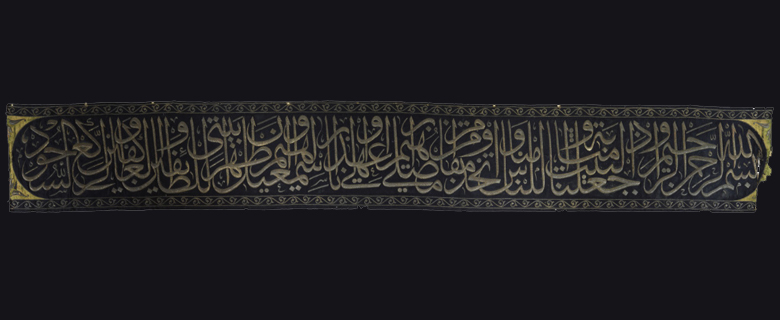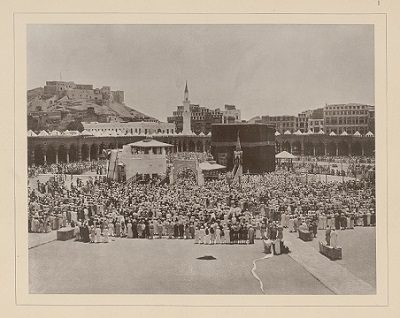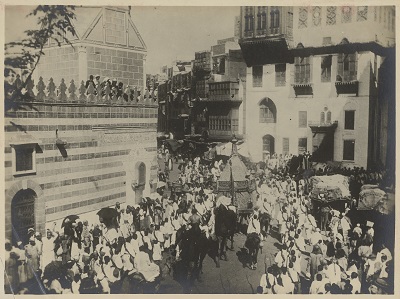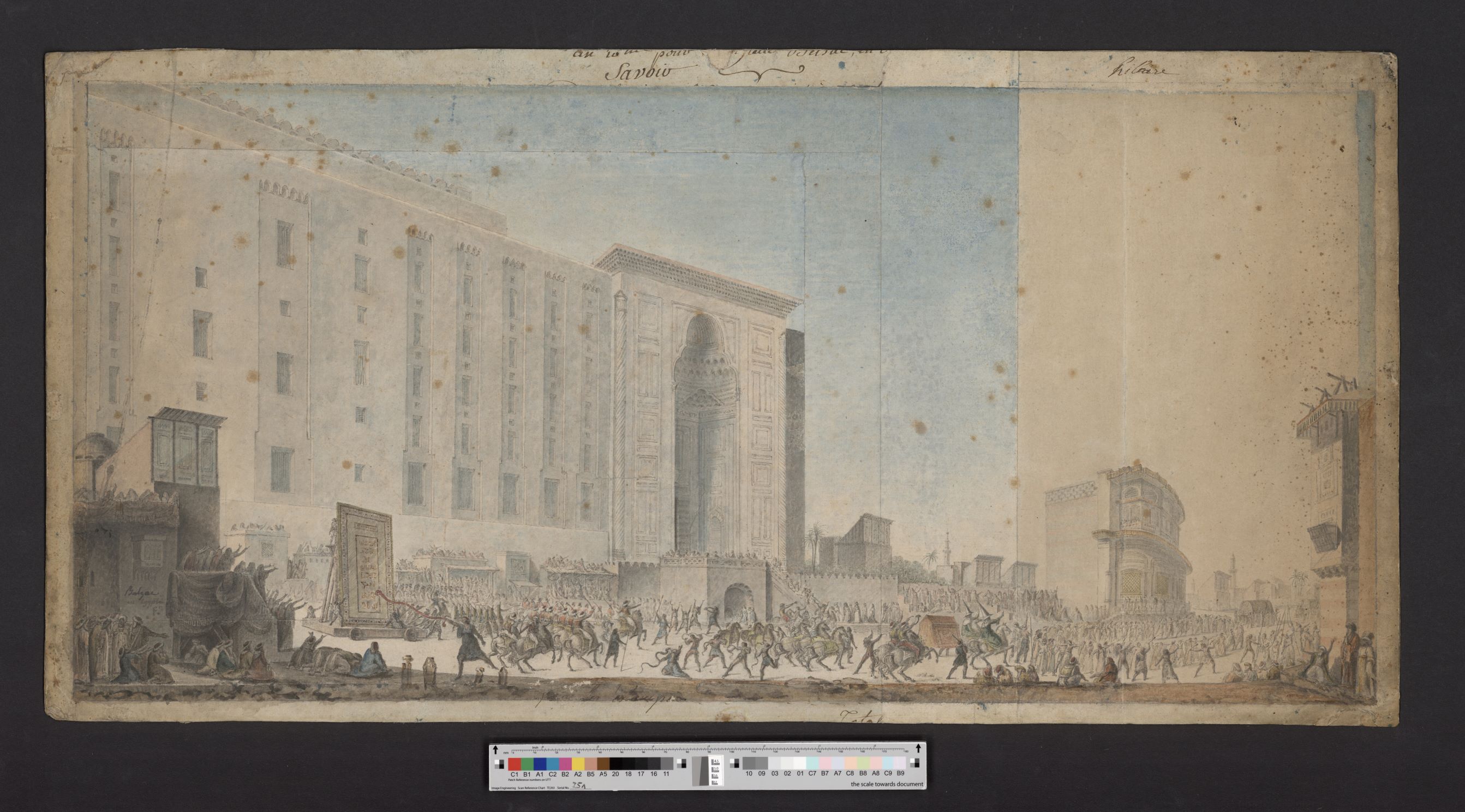
The history of Islam and its historical artefacts are intertwined with the history of the Gulf region, with items associated with hajj and the Kaaba being treated with special reverence and care.
In the permanent collection of Qatar National Library’s Heritage Library, is prominently displayed a 100-year-old piece of the kiswa [covering]– specifically the hizam or the embroidered belt that encircles the Kaaba – that hails from the time of the mahmal, the traditional caravan that once transported the covering to Mecca.
The kiswa exhibited in the Library was commissioned in the early to mid-1920s by King Fuad I of Egypt. The covering for the Kaaba had been produced in Cairo since the Mamluk period in the 13th century, where the hizam was embroidered with Qur’anic verses in silver and gold thread. Each year Muslim countries would help finance the cost of its production, although this changed in the mid-20th century when production was moved permanently to Mecca.
During the period when the Library’s kiswa was manufactured, though, the covering was still produced in the same workshop in Cairo that had been its home since the early 1800s. The calligraphic embroidery on display, which depicts the Qur’anic verse Sūrat al-Baqarah (The Cow), is the work of one of the greatest calligraphers of the late Ottoman period, ‘Abd Allāh al-Zuhdī. Al- Zuhdī died in 1879, but his work survived and is celebrated in the use of his stencils.
The custom of adorning the Kaaba in a covering dates from before the 1st century AH (7th century CE) in the pre-Islamic period when the cloth was originally made of Egyptian – and sometimes Yemeni – white linen. The color then changed from red, then to green, before becoming the black silk brocade used today.

Interestingly, in the Heritage Library hangs what is thought to be the earliest known photograph of the Kaaba and kiswa by an Arab photographer. It is believed to have been taken between 1886 and 1887 by the physician ‘Abd al-Ghaffar ibn ‘Abd al-Rahman al Baghdadi who worked with the Dutch orientalist Snouk Hurgronje during his visit to Mecca in 1885. The photo also captures many architectural landmarks that are no longer present and is titled View of the Mosque while Congregational Prayers are Held Inside.
 In the 1920s, when the kiswa in the Heritage Library was created, the tradition was still for it to be transported to Mecca in a caravan of pilgrims, a huge annual event for the cities through which it passed. Such was the importance of the occasion, that a whole industry sprang up around its annual journey, as shown by both a photograph and a painting on display in the Heritage Library’s collection. The earliest, from 1802, is rendered in ink and watercolor and was painted by Charles-Louis Balzac. Titled Procession of the Mahmal Through the Streets of Cairo, the work depicts the hundreds and maybe thousands of pilgrims who would accompany the kiswa to Mecca. The second image was taken by an unknown photographer in the early 20th century and is titled The Mahmal Entering the City of Mecca.
In the 1920s, when the kiswa in the Heritage Library was created, the tradition was still for it to be transported to Mecca in a caravan of pilgrims, a huge annual event for the cities through which it passed. Such was the importance of the occasion, that a whole industry sprang up around its annual journey, as shown by both a photograph and a painting on display in the Heritage Library’s collection. The earliest, from 1802, is rendered in ink and watercolor and was painted by Charles-Louis Balzac. Titled Procession of the Mahmal Through the Streets of Cairo, the work depicts the hundreds and maybe thousands of pilgrims who would accompany the kiswa to Mecca. The second image was taken by an unknown photographer in the early 20th century and is titled The Mahmal Entering the City of Mecca.
The kiswa is one of the most sacred pieces of Islamic art and it is a huge honor for Qatar National Library to be able to display and preserve this one for our and future generations. The centuries of tradition behind it are symbolic of the permanence of Islam and the love and respect of Muslims across the world for Prophet Mohammed (PBUH) and almighty Allah. To ensure our descendants and even people from across the world can view this kiswa, it has been digitized by Qatar National Library – a remarkable technological feat given the size of the covering. This digitally safeguards its craftmanship for centuries to come.

To see the kiswa at the Library, simply visit during opening times. The Heritage Library is open Saturday to Thursday, 8:00 AM to 8:00 PM, and on Fridays from 4:00 - 8:00 PM. An online exhibition about the Kaaba itself can be seen here.

Add new comment